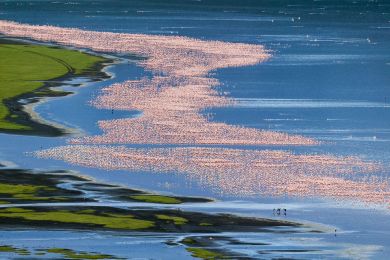By buying this product you can collect up to 178 loyalty points. Your cart will total 178 points that can be converted into a voucher of 35,60 €.
 View larger
View larger
Picture information
Oil residue landfill in Alberta, Canada
Yann ARTHUS-BERTRAND
Art photography by Yann ARTHUS-BERTRAND of Fort McMurray, Oil residue landfill from the exploitation of oil sands, Canada, Alberta. Oil sands that have been exploited for about thirty years represent the second largest oil reserve in the world with an estimated potential of 173 billion barrels.
Data sheet
| Orientation | Landscape |
| Color | Black |
Oil residue landfill in Alberta, Canada
Yann ARTHUS-BERTRAND
Art photography by Yann ARTHUS-BERTRAND of Fort McMurray, Oil residue landfill from the exploitation of oil sands, Canada, Alberta. Oil sands that have been exploited for about thirty years represent the second largest oil reserve in the world with an estimated potential of 173 billion barrels.
Fine Art Photography
Print by Experts
100 % Made In France
A recognized expertise, a search of permanent quality.
Printed by a professional photographic laboratory.
All prints are made to order, controlled by the Technical Director.
A certificate of authenticity is provided with each photograph.
Framework made by selected materials to give you the best results. every step of the processing is monitoring by experts.
Loyalty points
Gift Card
Don't miss the opportunity to do the best present...
The whole Yann Arthus-Bertrand photos available with Hemisgalerie gift card.
Lets your guest choose the best image.
Amount from 50 €, create and download directly on our website, valid for one year including promotions.
The original gift for all events
More info
Oil sands that have been exploited for about thirty years represent the second largest oil reserve in the world with an estimated potential of 173 billion barrels. To obtain one barrel of 159 litres of crude oil, one has to extract 2 tons of peat and soil and 2 tons of sand. Oil sands usually lie over 60 metres deep. Pits are dug and enormous trucks that can carry over 400 tons are used to take the oil sands to treatment plants. The water that is pumped in the river is used to separate the tar from the sand in large heated tanks. This tar is then turned into liquid oil before being sent, by pipeline, to supply North America. This titanic task is economically advantageous for the region.With the money from the oil, the population of the town very close to Fort McMurray has rapidly increased over the past few years. However, even if this wealth is advantageous for the province of Alberta, oil companies and the inhabitants, it is at the expense of the environment of us all. As the Boreal forest along the Athabasca River is destroyed, the soil is turned over and there is chemical residue and water contamination. The consequences of this environment exploitation are very serious. Despite the fluctuations of oil prices, extracting Alberta’s oil sands is still profitable and therefore seems set to continue unless the necessities of the fight against global warming come and put a stop to it.













































































